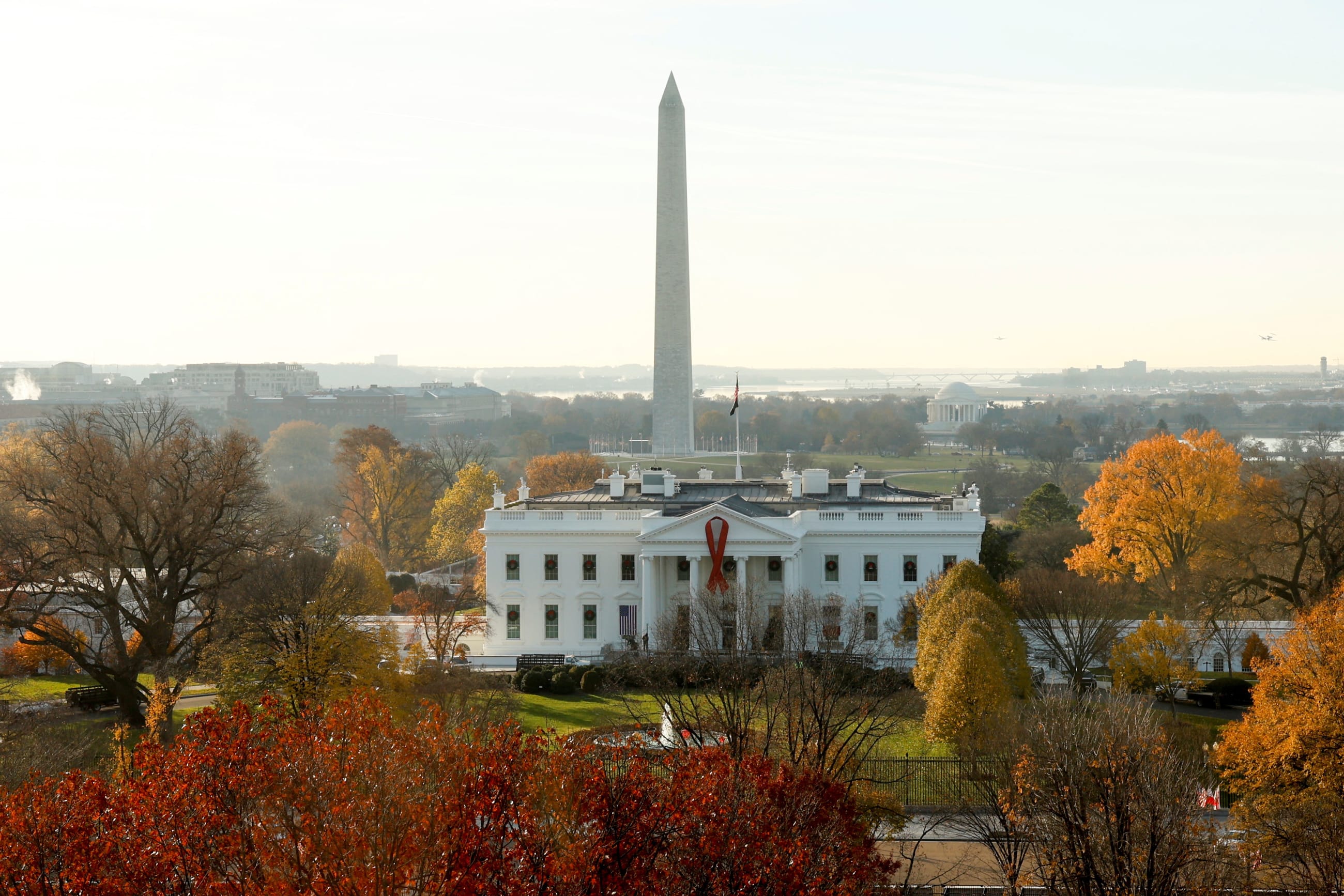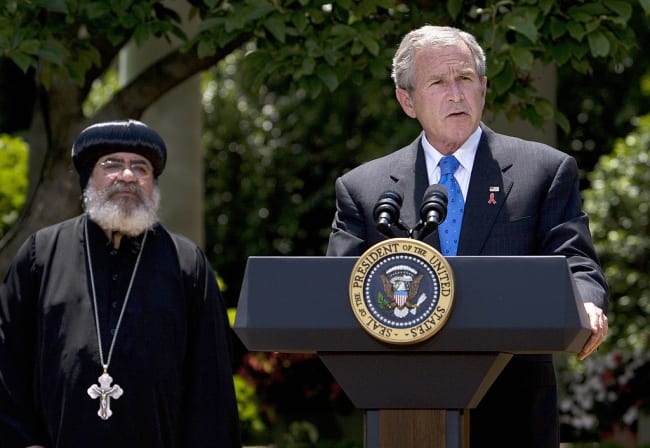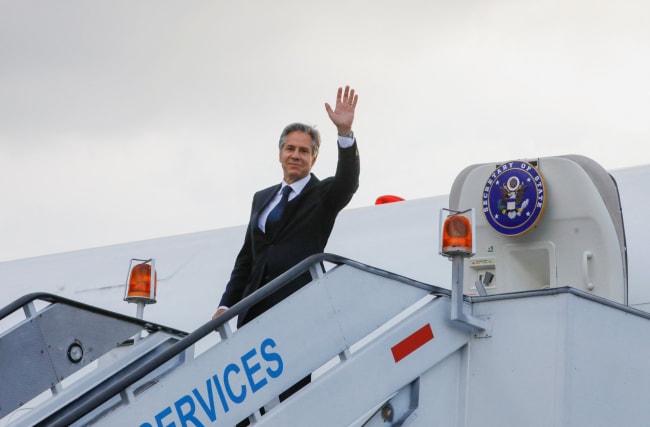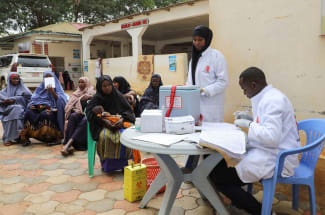Twenty years ago, on January 28, 2003, President George W. Bush gave a State of the Union address that changed the world. Congress had authorized use of force in Iraq three months earlier, and the president used the speech to reinforce a flawed and faulty rationale for extending the "war on terror." But in the next breath, he also launched a war on a virus—HIV—and unveiled a strategy for combating this modern plague that has, over twenty years, proved as successful and prescient as his military war proved disastrous.
PEPFAR was, and is, the largest disease-specific global health program in history, and this century's most successful effort to end a plague
The program Bush launched that night is called the President's Emergency Plan for AIDS Relief, or PEPFAR. It was, and is, the largest disease-specific global health program in American (or world) history, and this century's most successful effort to end a plague. In twenty years, the program has put more than twenty million people living with HIV on antiretroviral (ARV) drugs. In the sub-Saharan African countries where PEPFAR operates, fewer than 50,000 people were on ARVs when the program launched in 2003. The program has had mixed success with primary prevention in adolescent girls and young women and key populations, but it proudly claims that it's helped 5.5 million babies be born HIV-free.
A powerful, strategic and tireless global activist movement of people living with HIV and their allies created the world in which Bush's announcement was possible. The importance of these activists then and now to ensuring that health investments save lives and serve justice cannot be overstated.
However, there are also crucial elements of Bush's AIDS war for which he, and his team, deserve full credit. PEPFAR's success stemmed from a budget, structure, and White House mandate that broke the mold for U.S. global health and foreign aid. In a departure from piecemeal, often project-based development funding—a bridge here, a school or clinic there—PEPFAR came with a jaw-dropping budget. Instead of holding aid at arm's length, as did many of his Republican counterparts, the president threw his full and passionate support behind this program. And instead of placing the program within one of the fractious U.S. agencies that might claim to have the skills needed to respond to global AIDS, PEPFAR was established by law as an office in the U.S. State Department, with an ambassador-level head reporting to the Secretary of State and—in the Bush era—with a direct line to a receptive president.
The value of the PEPFAR structure, including its placement at the State Department and the elevated status of its leader, cannot be under-estimated. The results delivered to date would not have been possible if the money had been spent through any single U.S. agency. (And the funds made available to PEPFAR, a U.S.-controlled bilateral program, would almost certainly not have been dispensed for two decades to the essential multilateral, the Global Fund.)
Putting the program at the State Department gave the PEPFAR head the mandate and ability to work with heads of government directly and through U.S. ambassadors at the country level. USAID operates with a budget that is hamstrung by Congressional earmarks and a reporting system that, at the time, allowed implementers to notch success if they've spent money—regardless of the impact. When PEPFAR launched, the Centers for Disease Control and Prevention (CDC) had a paucity of country-based offices and no experience with making and managing large grants. Giving either program authority over the other would have triggered resentment and infighting of Shakespearean proportions. (As it is, the fractiousness of "the interagency" hovers somewhere between tragedy and farce.)
No other U.S. global health program—including subsequent emergency responses—has been as fast to create a fit-for-purpose structure and to name a single leader with presidential support and statutory powers to set policy and arbitrate disagreements between agencies.
In a 2016 analysis of the U.S. response to the 2014 Ebola outbreak prepared for Ambassador Susan Rice, then Obama's National Security Advisor, Christopher Kirchhoff, praised the eventual decision to identify a White House-based coordinator as a good one, noting, "A single person, accountable to the president, and working within the NSC [National Security Council] structure, is a model that works in extremis cases." But this coordinator—Ron Klain—was named four months after the WHO's already-belated classification of the outbreak as a Public Health Emergency of International Concern. In the intervening months, Kirchhoff documented some robust effort, and a fair share of interagency dithering, since there was: "No standing doctrine for how to combine the various deployable capabilities for fighting biological threats resident in HHS, CDC, USAID and DoD. There was little comprehension at the White House or among agencies of what those capabilities actually were."
The U.S. government approach to coordinating the global SARS CoV-2 response was no better. "The person in your position should have authority to step in when agencies are having difficulties," Senator James Risch fretted during a May 2021 congressional hearing with Gayle Smith, who'd been appointed coordinator for global COVID response and health security at the State Department in April 2021—months after Biden was inaugurated, having promised that the United States would re-engage with global health broadly and the SARS CoV-2 pandemic in particular.
Risch waxed poetic about PEPFAR and how the program's head was the workaround for interagency squabbling. He hoped Smith, a former USAID administrator and current executive director of the ONE Campaign, would do the same. She didn't. Smith stayed seven months—she'd always intended to return to ONE—and when she departed, it was no clearer who, across NSC, White House, USAID, and the State Department, was actually in charge of the U.S. global COVID-19 response.

A title alone doesn't make a mandate. Nor does working out of the State Department. It's about title, statutory authorities, budget, and presidential backing. That's the PEPFAR lesson and lives have been lost—and will continue to be—until it's been learned.
It is frustrating to watch the U.S. government ignore the playbook of its best pandemic-fighting program. But it's terrifying to witness what is happening now, a belated and poorly-conceived effort to settle the question of who is in charge by giving a whole new portfolio and title to the person with the best-written job description in all of U.S. global health—the U.S. global AIDS coordinator.
On December 13, 2022, Secretary of State Antony Blinken submitted a congressional notification of a proposed reorganization of the State Department's global health security and diplomacy functions. It is a well-intentioned and needed effort to bring various efforts, including work on the Pandemic Fund, the Pandemic Accord, global health diplomacy, and security under one roof. Under the new, proposed structure, the current PEPFAR head (formally known as the U.S. Global AIDS Coordinator) would hold the new role of Ambassador-at-Large for global health security and Diplomacy. The National Defense Authorization Act (NDAA) that Congress passed late last year spells out the job description for this new role, just as the U.S. Leadership on HIV/AIDS Act did for the PEPFAR role twenty years ago.
An exceptionally helpful analysis by amfAR compares and contrasts the PEPFAR role and the new global health security position. The latter has none of the statutory authorities of the PEPFAR coordinator. There is no programmatic budget, no ability to set policy or resolve interagency issues. Instead, the global health ambassador (GHS) ambassador will, per the legislation, enter a range, if not a mire, of collaborative processes with other agencies, as well as coordinating with not one but two newly-legislated positions with potentially overlapping job descriptions. One can be found in the NDAA, which creates a White House-designated "United States Coordinator for Global Health Security," who will coordinate a Global Health Security Agenda Interagency Review Council.
Meanwhile, the "omnibus" budget bill signed into law in the waning hours of 2022 established an Office of Pandemic Preparedness and Response Policy within the Executive Office at the White House. This role, which has the direct line to the president that true U.S. government global health impact appears to require, will take on "all matters related to pandemic preparedness and response." There is absolutely no language in these laws or in the State Department congressional notification that clarifies what each of these positions will take on. The omission is the answer, of course. No one person or agency is clearly in charge. With regard to the roles of the National Security Council, USAID, CDC, Department of Defense—the NDAA ignores every lesson from PEPFAR, Ebola, SARS CoV-2, and more, and proposes that these agencies "collaborate" and "coordinate" as needed.
It is frustrating to watch the U.S. government ignore the playbook of its best pandemic-fighting program
The proposed reorganization has some important strengths. It aligns disparate functions under a single bureau, and it signals both an understanding of the power of the PEPFAR head position and a vote of confidence in the current PEPFAR head, Ambassador John Nkengasong, the founding head of the Africa Centres for Disease Control and Prevention, and a distinguished scientist.
But the new portfolio will be time consuming and likely thankless role, based on prior U.S. global-health-by-committee endeavors. To free up time for all the coordination meetings, a permanent deputy assistant secretary (PDAS) in charge of PEPFAR's day-to-day operations. In effect, PEPFAR will be run on a daily basis by a mid-level State department official, instead of a presidentially-appointed, Senate-confirmed ambassador whose sole job is to finish the work of ending the HIV pandemic—an achievement that is within reach, but by no means a given.
During COVID-19, rates of HIV testing dropped, TB diagnosis and treatment suffered, and gender-based violence soared. HIV is a forty-year-old plague that's no longer considered an emergency precisely because of attention that has been paid. New approaches are needed now, and PEPFAR has been moving toward integrating HIV into health systems and looking at long-term sustainability for some time. But this is work that requires focus and strategy, to make sure that ground isn't lost in the AIDS fight as the program evolves. The same focus is needed to make sure that PEPFAR's contributions to SARS CoV-2 responses in many countries are leveraged as part of ongoing pandemic preparedness. Giving the Global AIDS Ambassador a portfolio that includes health security and diplomacy might look like a way to maintain this focus—but the confusion about roles, responsibilities and mandates suggests otherwise.
If the GHS Ambassador had the assets that the PEPFAR coordinator has—a budget, targets, presidential backing, and a broad mandate—then the reorganization might look much less threatening to the AIDS fight, and much more promising to the U.S. strategy for pandemic preparedness and response. But there's a nuance about PEPFAR's placement that also has to be considered. For twenty years, the AIDS fight has been in but not of the State Department. It delivered services, made its own reporting systems and had leeway in hiring and staffing that were quite different from the State Department standard operating procedures. It notched its greatest successes because it was sui generis. The more that PEPFAR is integrated into the State Department bureaucracy, the greater the risk that the program will be irrevocably damaged.
There is also a risk to the broader U.S. public health response. Neither the proposed State Department reorganization nor the positions and offices in the NDAA and the omnibus answer the life-or-death question: when the next pandemic hits, who is the U.S. government official in charge of the global response?
The positions named in the NDAA and the omnibus budget are enacted by law. The State Department reorganization is not a done deal. As of mid-January, the congressional notification had not, moved forward. There was no sign that a formal hold has been placed on the notification, but the fifteen-day period for such statutes has come and gone, and the congressional notification has not progressed. On the Hill, PEPFAR watchers have concerns that, as one Congressional staffer put it to me, the reorganization is "not really taking stock of the political risks that exist" to the PEPFAR program that come with changing its position and the powers of its leader at this pivotal time.
Later this year, Congress will need to reauthorize the program, its multi-billion-dollar budget and its focus on a forty-year-old plague that continues to claim lives—particularly of children—and that has seen persistently high levels of new infections in adolescent girls and young women, and key populations like men who have sex with men, and transgender women, over the past decade.
PEPFAR ambassadors have historically used their clout to push countries to be more ambitious and more progressive in recognizing and preserving the human rights of sex workers, people who use drugs, and LGBTQI people. (They've also stayed shamefully silent, or they act as agents for a conservative agenda.) Many PEPFAR countries are also in the geographies with the greatest risk for new pandemic-potential outbreaks. Given the choice between pushing a country to protect the lives and rights of transgender people and maintaining access to their genomic data on new pathogens—would this new dual-hatted ambassador have the courage (and the backing) to stand for human rights?
These are the kinds of questions that can and must be answered before the congressional notification moves forward and the reorganization is enshrined. If the core elements of this unique program's structure are not preserved, this anniversary will be remembered as a memorial.













